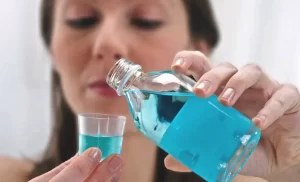Relieving Ingrown Toenails: Natural Solutions for Comfort
Warm Foot Soaks: Soaking your feet in warm water can help soften the skin around the ingrown toenail and reduce pain and inflammation. Add Epsom salt or mild antibacterial soap to the water for added relief.
Gentle Nail Trimming: Trim your toenails straight across and avoid rounding the edges to prevent further ingrowth. Use clean, sanitized nail clippers or scissors and avoid cutting the nails too short.
Cotton Wedge: Gently lift the ingrown edge of the toenail and place a small piece of clean, sterile cotton under it to help lift the nail away from the skin. This can provide relief from pressure and encourage proper nail growth.
Topical Antibiotics: Apply over-the-counter antibiotic ointment or cream to the affected area to prevent infection and promote healing. Keep the area clean and dry after applying the ointment.
Tea Tree Oil: Tea tree oil has natural antibacterial and antifungal properties that can help prevent infection and reduce inflammation associated with ingrown toenails. Dilute tea tree oil with a carrier oil like coconut oil and apply it to the affected area several times a day.
Apple Cider Vinegar Soak: Soaking your feet in a mixture of warm water and apple cider vinegar can help soften the skin around the ingrown toenail and reduce pain and swelling. Use one part vinegar to four parts water and soak for 15-20 minutes.
Elevating the Feet: Elevating your feet can help reduce swelling and discomfort associated with ingrown toenails. Prop your feet up on pillows or cushions while resting to promote better circulation and reduce pressure on the affected area.
Wear Proper Footwear: Avoid wearing tight or narrow shoes that can put pressure on the toes and exacerbate ingrown toenails. Opt for shoes with a wide toe box and breathable materials to allow for proper airflow and reduce friction.
Avoid Aggravating Activities: Avoid activities that put pressure on the toes, such as running or jumping, until the ingrown toenail has healed. Opt for low-impact exercises like swimming or cycling instead.
Consult a Professional: If home remedies do not provide relief or if the ingrown toenail becomes infected or increasingly painful, seek medical attention from a podiatrist or healthcare provider. They may recommend professional treatment such as nail trimming, antibiotics, or, in severe cases, surgical intervention.
By incorporating these natural remedies into your routine and taking preventive measures to avoid further irritation, you can alleviate discomfort associated with ingrown toenails and promote healing. However, if symptoms persist or worsen, it’s essential to seek professional medical advice.









